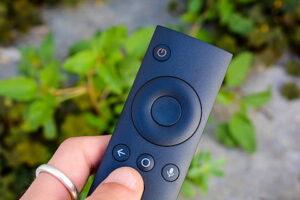LED lights have become a popular choice for both residential and commercial spaces due to their energy efficiency and vibrant lighting options. However, what happens when you can’t find the remote control to turn them on? Don’t worry! In this guide, we’ll explore a variety of methods to help you turn on LED lights without a remote. Whether you’ve misplaced the remote or it’s simply not working, these techniques will ensure you can still enjoy the benefits of your LED lights.
How to Turn On LED Lights Without a Remote
If you’re wondering how to turn on LED lights without a remote, you’re in the right place. We’ve compiled a list of methods that will help you light up your space effortlessly.

1. Using the Wall Switch
One of the simplest ways to turn on LED lights without a remote is by using the wall switch. Most LED light setups are connected to a wall switch, which acts as the main power control. Locate the switch and flip it on to illuminate your LED lights.
2. Mobile App Control
Many modern LED light systems come with companion mobile apps that allow you to control the lights remotely. Download the app, connect it to your lights, and use your smartphone to turn them on and off.
3. Smart Home Assistants
If you have a smart home assistant like Amazon Alexa or Google Assistant, you can control your LED lights using voice commands. Make sure your lights are compatible with the assistant and set up the integration accordingly.
4. Using a Timer
Invest in a timer plug or smart plug that you can connect your LED lights to. This will enable you to set specific times for the lights to turn on and off automatically.
5. Manual Control on the Lights
Check the LED lights themselves for any manual control buttons. Some lights come with built-in buttons that allow you to adjust settings, including turning them on and off.
6. Remote Apps
If your LED lights were initially paired with a remote control, you might be able to find a remote control app for your smartphone. This can serve as a virtual replacement for your lost remote.
7. Using a Universal Remote
Consider using a universal remote that can be programmed to work with various devices, including LED lights. Program the remote to sync with your lights and use it to control their operation.

8. Contact the Manufacturer
Reach out to the manufacturer of your LED lights. They might provide assistance or guidance on alternative methods to control the lights if the remote is lost or malfunctioning.
9. Invest in a New Remote
If all else fails, you can purchase a new remote control for your LED lights. Ensure that the new remote is compatible with your specific light model.
10. Syncing with Another Remote
If you have other devices with infrared (IR) remotes, you might be able to sync them with your LED lights. However, this method depends on the compatibility of the remotes.
Tips and Tricks for Using LED Lights Effectively
Using LED lights effectively involves more than just turning them on. Here are some tips to make the most of your LED lighting setup:
- Choose the Right Color Temperature: LED lights come in various color temperatures, from warm to cool. Select the right temperature for the mood and purpose of the room.
- Use Dimmers: If your LED lights are dimmable, consider installing dimmer switches to adjust the brightness according to your needs.
- Layer Lighting: Instead of relying solely on overhead LED lights, incorporate task and accent lighting for a layered and visually appealing effect.
- Opt for Smart Bulbs: Smart LED bulbs allow you to change colors, adjust brightness, and even sync with music, creating a dynamic atmosphere.
- Regular Maintenance: Keep your LED lights clean and free from dust to maintain their efficiency and lifespan.

FAQs
Q: Can I control LED lights without a remote? A: Yes, you can control LED lights without a remote using methods like using the wall switch, mobile apps, smart home assistants, timers, and manual controls.
Q: What if my LED lights don’t have built-in controls? A: If your LED lights lack built-in controls, consider using a universal remote, syncing with another remote, or contacting the manufacturer for guidance.
Q: Are there smartphone apps for controlling LED lights? A: Many LED lights come with companion apps that allow you to control them using your smartphone. Check the manufacturer’s information for details.
Q: How do I choose the right color temperature for LED lights? A: The right color temperature depends on the room’s purpose. Warmer temperatures (2700K-3000K) create a cozy ambiance, while cooler temperatures (5000K-6000K) are ideal for task lighting.
Q: Can I use dimmers with LED lights? A: Yes, if your LED lights are dimmable, you can install dimmer switches to adjust their brightness levels.
Q: Do LED lights require special maintenance? A: LED lights require minimal maintenance. Regularly clean them to ensure optimal performance and longevity.
Conclusion
Turning on LED lights without a remote is not only possible but also quite straightforward. With a variety of methods at your disposal, you can conveniently control your LED lights and create the desired atmosphere in your space. Whether you opt for smartphone apps, smart home assistants, or manual controls, the flexibility and versatility of LED lighting ensure that you can illuminate your surroundings according to your preferences.
So, next time you find yourself without a remote, remember these practical solutions to keep enjoying the benefits of LED lighting. Whether you’re using the wall switch, a mobile app, or exploring other innovative options, your LED lights will continue to brighten up your life.
You May Also Enjoy Reading: How to Reset Astro A50 Headset? (For BEST Output)

